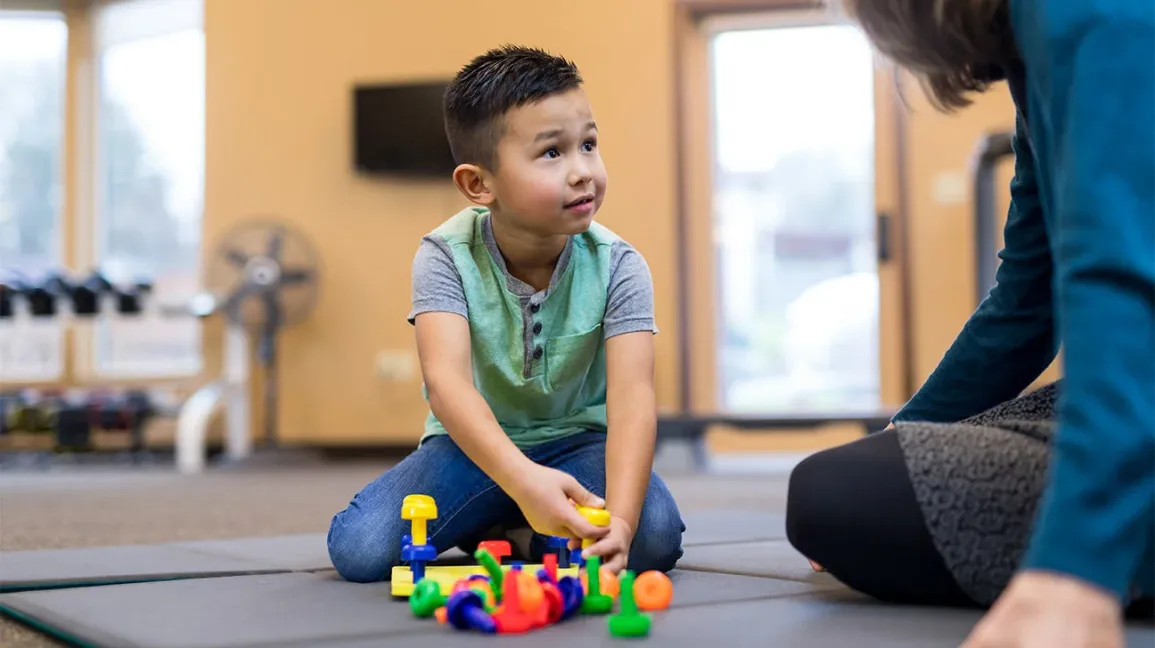Play therapy differs from play at home because of its environment, approach, goals, and methods. A children’s play therapist receives training in child psychology and implements interventions tailored to each participant in their sessions. Here are the distinctions between play therapy and home play:
Contents
Professional Guidance Provided
A play therapist uses guided play sessions as part of the therapeutic process. They have the training to assess developmental milestones in language, motor functions, reasoning, and socialization through playtime observation. The therapist may also pick up cues on a child’s inner emotional experiences. Sessions target the development of new coping techniques and behaviors. While the observation of everyday free play does provide some limited insights, it offers less guidance for ongoing behavioral change in an at-home model.
Goal-Oriented Engagement
Sessions led by play therapists incorporate therapeutic strategies meant to help clients work through emotional difficulties or trauma. The therapist might create scenarios in the playroom that help individuals practice social skills, express feelings, or overcome fears. Over time, these interventions might resolve the underlying sources of emotional distress like grief or anxiety. At home, regular play is unstructured and rarely has the same targeted goal of achieving healing or observing behavior. A therapist has the training to create goals through play observation.
Safe Emotional Space
The sessions are set up to make kids feel emotionally safe and encourage open expression. Neutral toys allow them to create scenarios or settings and experiment with new ways of interacting with others. The therapist explores and may validate potential internal narratives that lie beneath children’s play environments. This facilitates processing complex emotions that may otherwise remain suppressed. Some home environments might contain judgment from siblings or parents or dismissal that can impede emotional exploration by invalidating a child’s feelings. Various family dynamics could make sharing certain stories difficult.
Therapeutic Techniques Applied
Techniques used by therapists consist of tools that guide individuals in realizing and communicating things they may not be able to verbalize. Sand trays can allow them to portray their thoughts through miniaturization. Finger paints, puppets, and role-play may offer symbolic outlets for emotion. Kids might create metaphoric journeys to confront grief or negotiate peer conflict. At home, caregivers may stock non-specialized toys lacking these therapeutic properties and potential emotional outlets. While still enjoyable, these tools then lack the objectives of facilitating self-discovery and articulation.
Problem-Solving Focus
Through activities like reconstructing events with minifigures or acting out tensions, a children’s play therapist can guide kids to see how their thoughts, feelings, and behaviors all connect. Facilitated reenactments might then also support cognitive restructuring as kids practice alternative ways of thinking, relating, or handling new situations. Role-playing peer conflicts could explore different responses for a more positive resolution process. Home play may include making up stories, but it lacks the scaffolding for promoting self-awareness and problem-solving skills that sessions have.
Evidence-Based Strategies
A play therapist can match methods to each child’s age and developmental stage. Sessions further incorporate proven tools like expressive art and metaphorical stories and scenarios. Outcomes also align with clinical goals, such as enhancing emotion regulation or trauma processing. Play that takes place outside the home environment can be spontaneous versus rooted in any researched strategies. The therapist provides ongoing feedback that helps adjust techniques as needed for progress.
Consult a Children’s Play Therapist
Explore formal play therapy programs near you to supplement at-home play. Therapy providers offer services like individual sessions as well as family guidance. They may teach parents how to integrate purposeful practices into home settings. Knowledge can help reinforce new skills and behaviors as you strengthen family bonds through play. Consult a children’s play therapist near you to learn how structured guidance and techniques can support your child.
